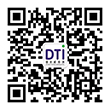Tableware German LFGB Testing and Certification Notes
Date:2025-06-24 09:49:33 Classification
:【question】 Visits:
Before tableware is sold in the German market, it needs to pass the German LFGB certification to ensure that it complies with German food safety regulations. The following are things to note when conducting LFGB testing and certification:
1. Understand the LFGB certification requirements
- Regulatory requirements: LFGB is Germany's regulations on food and daily necessities, which stipulates the safety requirements for materials and products that come into contact with food. These requirements include the chemical stability of the material, non-toxicity, and no contamination to food.
- Scope of application: LFGB certification applies to all materials and products that may come into contact with food, including plastics, glass, ceramics, melamine, rubber, wooden materials, etc.
2. Choose a suitable certification body
- Qualification certification: Choose a qualified, German-recognized third-party testing laboratory. These laboratories usually have the corresponding equipment and technical capabilities to conduct tests in accordance with LFGB requirements.
- Service scope: Confirm that the laboratory can provide complete LFGB certification services, including testing, evaluation and report issuance.
3. Submit application materials
- Product information: Provide detailed information on the product, including material composition, production process, use, etc.
- Technical documents: Provide technical documents related to the product, such as Material Safety Data Sheet (MSDS), process flow chart, quality control plan, etc.
4. Sample preparation
- Sample quantity: Prepare a certain number of samples for laboratory testing. The number of samples should meet the testing needs of the laboratory, and multiple samples are usually required to ensure the accuracy and reliability of the test.
- Sample status: Ensure that the sample is in actual use so that the test results can truly reflect the safety of the product.
5. Test items
- Comprehensive migration test: Conducted in different food simulation liquids to detect whether there is any release of ingredients that pose a risk to human health.
- Sensory test: Evaluate whether the product will change the sensory properties of food such as taste, smell, color, etc.
- Heavy metal test: Detect the dissolution of heavy metals such as lead and cadmium.
- Specific substance migration test: Depending on the material, it may be necessary to test the migration of specific substances, such as plasticizers, formaldehyde, etc.
6. Test report and certificate
- Report content: After the test is completed, the laboratory will issue a detailed test report, which should include test items, test methods, test results, etc.
- Certificate issuance: If the product passes all tests, it will obtain the LFGB certification certificate. This certificate proves that the product complies with German food safety regulations and can be sold in the German market.
7. Subsequent supervision
- Market spot check: After obtaining certification, the product may be subject to supervision and spot checks by relevant German agencies during the market sales process to ensure continued compliance with regulatory requirements.
- Quality control: Enterprises need to maintain stable product quality and be ready to respond to possible regulatory inspections at any time.
8. Notes
- Regulatory updates: The specific requirements and processes of German LFGB certification may change with the update of regulations. It is recommended to understand the latest regulatory requirements and processes in detail before applying for certification.
- Testing cycle: The entire certification process may take a certain amount of time, generally 5-7 working days.
Through the above precautions, tableware manufacturers can better prepare and conduct LFGB certification, ensure that their products comply with German food safety regulations, and smoothly enter the German market.




 Shen Gongwang Security: 44030602006947
Shen Gongwang Security: 44030602006947